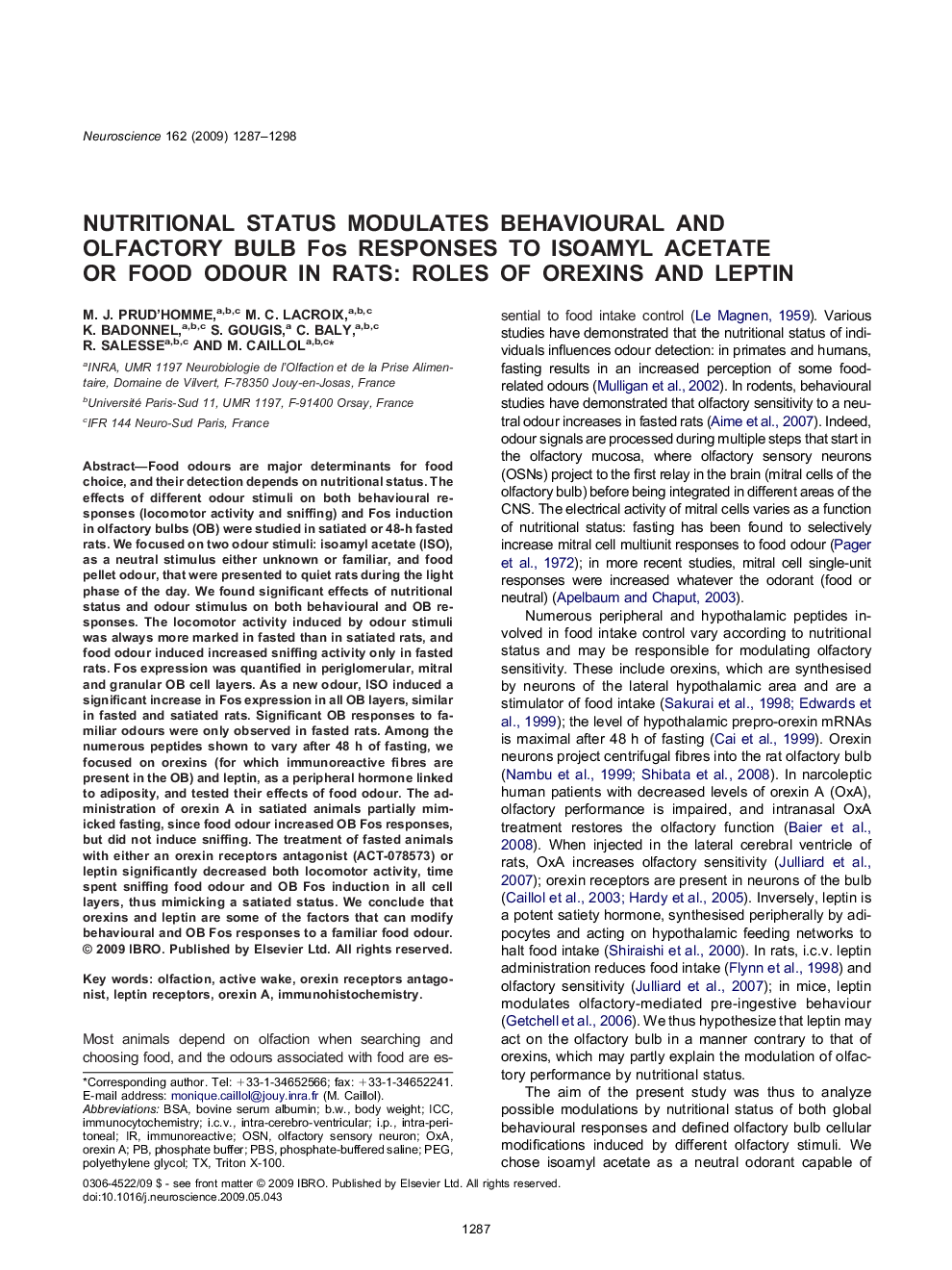| Article ID | Journal | Published Year | Pages | File Type |
|---|---|---|---|---|
| 4340248 | Neuroscience | 2009 | 12 Pages |
Food odours are major determinants for food choice, and their detection depends on nutritional status. The effects of different odour stimuli on both behavioural responses (locomotor activity and sniffing) and Fos induction in olfactory bulbs (OB) were studied in satiated or 48-h fasted rats. We focused on two odour stimuli: isoamyl acetate (ISO), as a neutral stimulus either unknown or familiar, and food pellet odour, that were presented to quiet rats during the light phase of the day. We found significant effects of nutritional status and odour stimulus on both behavioural and OB responses. The locomotor activity induced by odour stimuli was always more marked in fasted than in satiated rats, and food odour induced increased sniffing activity only in fasted rats. Fos expression was quantified in periglomerular, mitral and granular OB cell layers. As a new odour, ISO induced a significant increase in Fos expression in all OB layers, similar in fasted and satiated rats. Significant OB responses to familiar odours were only observed in fasted rats. Among the numerous peptides shown to vary after 48 h of fasting, we focused on orexins (for which immunoreactive fibres are present in the OB) and leptin, as a peripheral hormone linked to adiposity, and tested their effects of food odour. The administration of orexin A in satiated animals partially mimicked fasting, since food odour increased OB Fos responses, but did not induce sniffing. The treatment of fasted animals with either an orexin receptors antagonist (ACT-078573) or leptin significantly decreased both locomotor activity, time spent sniffing food odour and OB Fos induction in all cell layers, thus mimicking a satiated status. We conclude that orexins and leptin are some of the factors that can modify behavioural and OB Fos responses to a familiar food odour.
